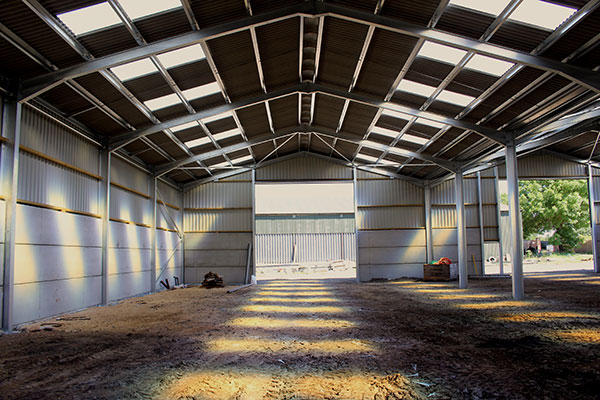
Agricultural buildings play a vital role in the modern farming landscape, providing essential spaces for storing equipment, housing livestock, and processing crops. These buildings have evolved over the years to meet the changing needs of farmers and to accommodate advances in technology and agricultural practices. Let’s explore the key types of agricultural buildings and their significance in supporting the future of farming.
1. Barns: Barns are the quintessential agricultural buildings and have been a staple of farming for centuries. They serve multiple purposes, including housing livestock, storing feed, and sheltering farm equipment. Modern barns are designed with improved ventilation, lighting, and efficient layouts to optimize animal health and productivity.
2. Silos and Grain Storage: Silos and grain storage facilities are crucial for preserving harvested crops. These structures protect grains and other produce from pests, moisture, and spoilage, ensuring a steady supply throughout the year. Contemporary silos are often made from durable materials and equipped with aeration systems to maintain grain quality.
3. Greenhouses: Greenhouses are designed to control the growing environment for plants, offering protection from harsh weather conditions and allowing year-round cultivation. They play a vital role in producing fresh vegetables, fruits, and flowers even in adverse climates. Advancements in greenhouse technology, such as automated climate control and hydroponic systems, have revolutionized modern agriculture.
4. Livestock Shelters: Livestock shelters are designed to provide a safe and comfortable environment for animals, protecting them from extreme weather and disease. These structures are adapted to suit different livestock types, such as poultry houses, cattle barns, and hog buildings. Modern livestock shelters often incorporate innovative ventilation and waste management systems for optimal animal health.
5. Processing Facilities: Agricultural buildings are also involved in post-harvest activities. Processing facilities, including packing houses and food processing plants, are essential for sorting, grading, and preparing crops for distribution. These buildings adhere to strict food safety standards and incorporate efficient machinery to handle large volumes of produce.
6. Equipment Storage: Modern farming relies heavily on machinery and specialized equipment. Agricultural buildings for equipment storage provide protection from the elements, reducing maintenance costs and extending the lifespan of valuable machinery.
7. Agricultural Workshops: Agricultural workshops are multi-functional spaces where farmers can carry out equipment repairs, fabricate parts, and conduct maintenance tasks. These buildings are equipped with tools and equipment necessary for efficient farm operations.
8. Dairy Facilities: Dairy buildings cater specifically to milk production and processing. Dairy barns and milking parlors are designed to accommodate the specific needs of cows and facilitate milking operations.
As agriculture continues to evolve, the design of agricultural buildings becomes increasingly important. Sustainable practices, energy efficiency, and environmental considerations are becoming integral to modern building designs. Agricultural buildings must adapt to the changing landscape of farming practices, ensuring that farmers have the tools they need to produce food efficiently and sustainably for the future.










